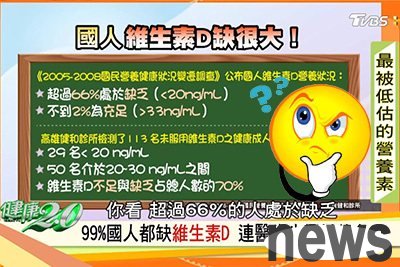
The day before yesterday (2021-4-13), the American Medical Association journal JAMA published 5 articles on whether vitamin D screening is needed. The most important one is a research report by the US Preventive Services Task Force (USPSTF), while the other four are: a statement based on this research report, a guide to the public, and two edited comments.
The US Preventive Services Team (USPSTF) is a non-profit organization composed of many medical experts. It specializes in providing suggestions on whether various medical projects (such as screening and treatment) need to be implemented, and has a high status.
The research report just released by this work team is Screening for Vitamin D Deficiency in Adults: Updated Evidence Report and Systematic Review for the US Preventive Services Task Force (Adult Vitamin D Deficiency: The latest certification report and system evaluation of the U.S. Preventive Services Team), and its conclusion is: There is no study to evaluate the direct pros and cons of insufficient Vitamin D Deficiency. Among residents of the symptomatic community with low vitamin D levels, there are evidence that vitamin D treatment has no effect on the incidence of mortality or fractures, falls, depression, diabetes, cardiovascular disease, cancer or adverse events. There is still no consensus on the impact of treatment on body function and infection.
This conclusion is of course very different from what Taiwanese media like most about "99% of people lack vitamin D". Please see the picture below (note: I added the suspicious expression image).

For this research report of USPSTF, the American Medical Association journal provides two edited reviews, one of which is the title of Why USPSTF Still Finds Insufficient Evidence to Support Screening for Vitamin D Deficiency.
This editorial review discusses the so-called deficiency of vitamin D and the various problems of related research, so I decided to sort out its focus as follows:
The US Preventive Services Team (USPSTF) concluded in 2014 that among adults with 18 and above who have no sufficient evidence to evaluate the pros and cons of lack of vitamin D. Nowadays, as there have been many random clinical trials in the past seven years that have investigated whether supplementing vitamin D can improve cardiovascular disease, cancer, diabetes, depression, bone health and falls, it is necessary to reassess whether it is necessary to examine vitamin D deficiency.
Vitamin D screening was measured by measuring the 25-radical vitamin D (25 [OH]D) level in the blood. In epidemiological studies, low levels of 25 (OH)D have been closely related to many health conditions such as depression, fractures, weakness, falls, diabetes, hypertension, cardiovascular disease, cancer, etc. However, correlation does not equal causality, while lower 25 (OH)D usually only reflects poorer health. For example, people with obesity, reduced outdoor sports activities and less healthy eating are more likely to have a lower 25 (OH)D level. Importantly, high-quality clinical trials have not yet found that supplemental vitamin D can significantly reduce these conditions. Even vitamin D is challenged for bone health and musculoskeletal benefits.
How to accurately measure 25 (OH)D has always been a challenge. The most commonly used immunoassays can greatly overestimate or underestimate the level of 25 (OH)D. In addition, 25(OH)D is mainly circulating in the blood in a combined form, so only 10% to 15% are in the bioavailability state. However, current clinical testing cannot be divided into states and bioavailability. In this way, Vitamin D's screening technology is necessary to improve.
The use of 25 (OH)D as a marker for bone health has always existed, that is, the phenomenon of disobedience among races. Due to less absorption of UV-B, the 25 (OH)D level in the skin of black adults living in northern China is lower than those with milder skin, but black women usually have higher bone density than white women of the same age, and the fracture rate is also lower. Therefore, it is difficult to define what is called vitamin D deficiency in population.
According to current definitions, about half of adults will be considered as lacking or insufficient in vitamin D. Although people with symptoms believe that vitamin D deficiency and no obvious harm, overtreatment is potential vitamin D toxicity, which can lead to adverse clinical manifestations caused by hypercalcemia and hypergaluria. Even without obvious hypercalcemia, studies have shown that supplementing vitamin D over 4,000 IU per day may even reduce bone health and increase risk of falls. Combination of vitamin D and calcification may increase the risk of kidney stones. Therefore, the daily intake that does not exceed the recommended vitamin D supplement should be considered as a benign pneumoniae. (Note: The recommended daily intake is about 600 units, which includes input from food and sunshine)
In summary, in 2021, the USPSTF's suggestion remains "insufficient evidence and the lack of screening of vitamin D for adults with no symptoms". The biggest challenge remains that there is no research to evaluate the direct pros and cons of surveillance of vitamin D deficiency. To improve on this, further data is needed to determine whether widespread population-based inspections are better than selective targeted measurements, or better than not doing 25 (OH)D measurements at all. Ideally, evaluating clinical trials such as this kind of screening method will produce the most powerful evidence, but will be challenging in implementation. The screening test requires careful selection of clinical results to demonstrate benefits (bone health and others). In addition, the required trial duration is uncertain, and the benefits of surveillance in Asia may be of great disparity. In the past seven years, despite the addition of many clinical studies on vitamin D supplementation, the assessment of whether vitamin D screening is required is still insufficient.
Note: The review and supplement of vitamin D has a comprehensive discussion on the truth about vitamin D published last year, and these discussions are still correct and effective, which is consistent with these 5 latest articles from JAMA.
Original text: There is still no sufficient evidence to support Vitamin D screening